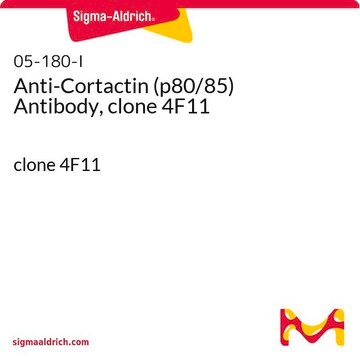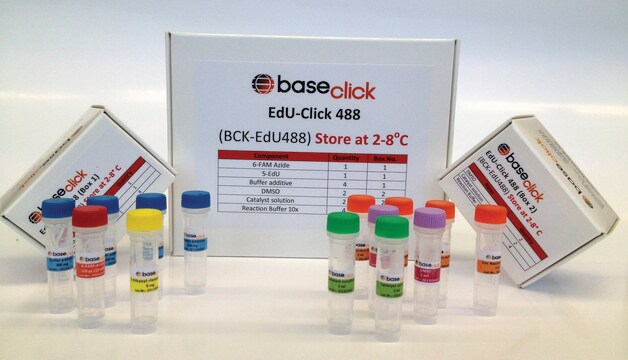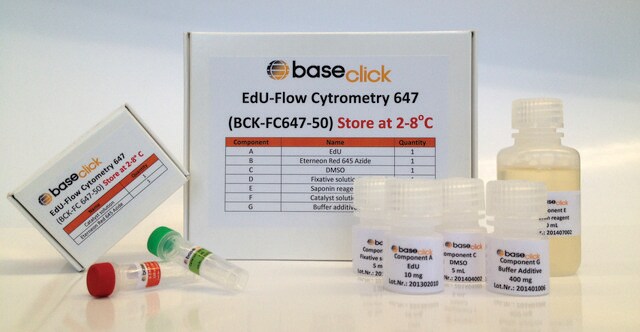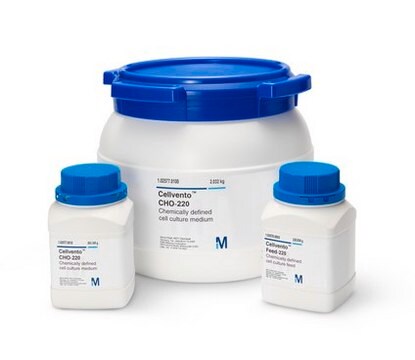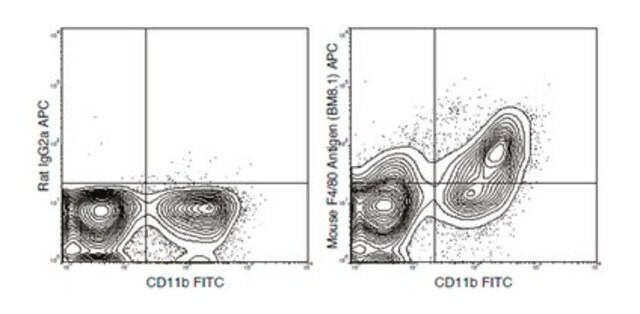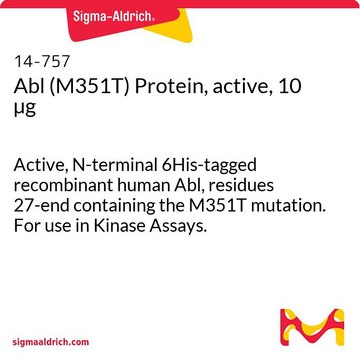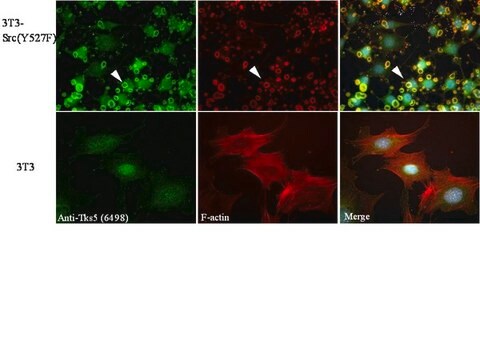16-228
Anti-Cortactin (p80/85) Antibody, clone 4F11, Alexa Fluor™ 488
clone 4F11, Upstate®, from mouse
About This Item
Prodotti consigliati
Origine biologica
mouse
Livello qualitativo
Coniugato
ALEXA FLUOR™ 488
Forma dell’anticorpo
purified immunoglobulin
Tipo di anticorpo
primary antibodies
Clone
4F11, monoclonal
Reattività contro le specie
bovine, human, mouse, rat, hamster, avian
Produttore/marchio commerciale
Upstate®
tecniche
flow cytometry: suitable
immunocytochemistry: suitable
immunofluorescence: suitable
western blot: suitable
Isotipo
IgG1
N° accesso NCBI
N° accesso UniProt
Condizioni di spedizione
wet ice
Informazioni sul gene
human ... CTTN(2017)
Specificità
Immunogeno
Applicazioni
Cell Structure
Cytoskeleton
Qualità
Descrizione del bersaglio
Stato fisico
Stoccaggio e stabilità
Risultati analitici
Negative Control: Catalog # 16-240, Normal Mouse IgG, Alexa Fluor™ 488-conjugate.
Note legali
Esclusione di responsabilità
Alexa Fluor is a registered trademark of Molecular Probes, Inc.
Non trovi il prodotto giusto?
Prova il nostro Motore di ricerca dei prodotti.
Codice della classe di stoccaggio
12 - Non Combustible Liquids
Classe di pericolosità dell'acqua (WGK)
WGK 2
Punto d’infiammabilità (°F)
Not applicable
Punto d’infiammabilità (°C)
Not applicable
Certificati d'analisi (COA)
Cerca il Certificati d'analisi (COA) digitando il numero di lotto/batch corrispondente. I numeri di lotto o di batch sono stampati sull'etichetta dei prodotti dopo la parola ‘Lotto’ o ‘Batch’.
Possiedi già questo prodotto?
I documenti relativi ai prodotti acquistati recentemente sono disponibili nell’Archivio dei documenti.
Il team dei nostri ricercatori vanta grande esperienza in tutte le aree della ricerca quali Life Science, scienza dei materiali, sintesi chimica, cromatografia, discipline analitiche, ecc..
Contatta l'Assistenza Tecnica.